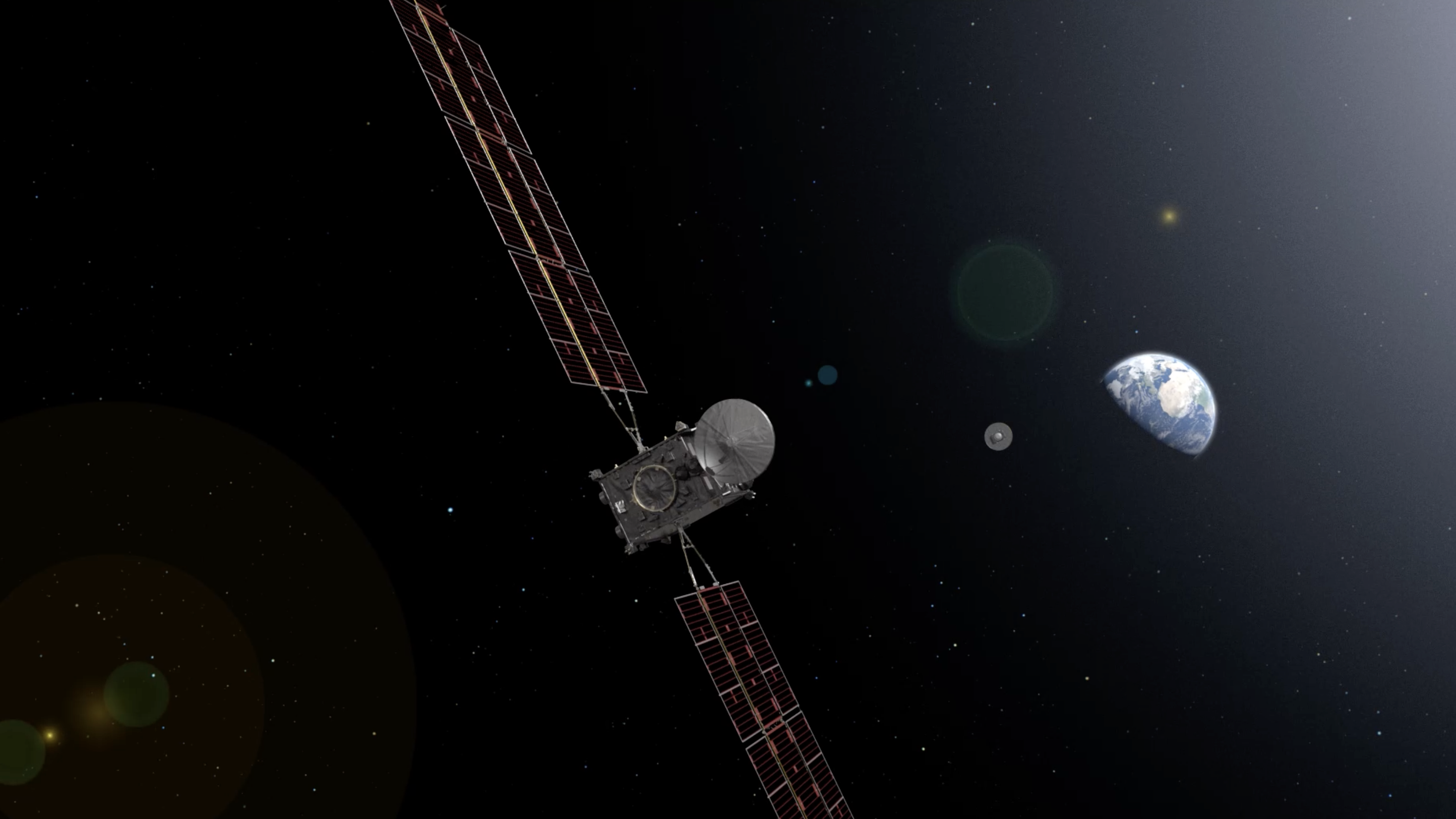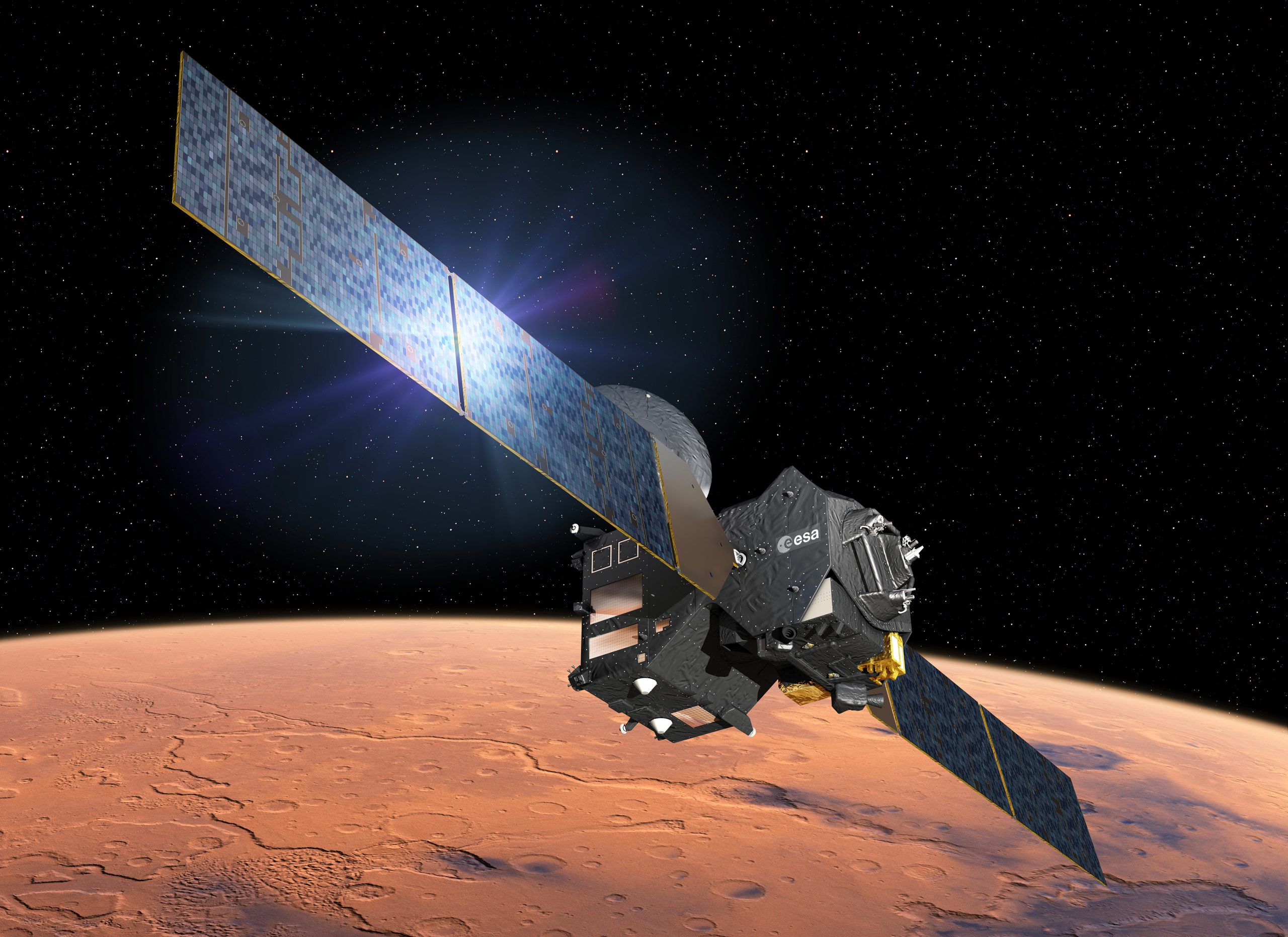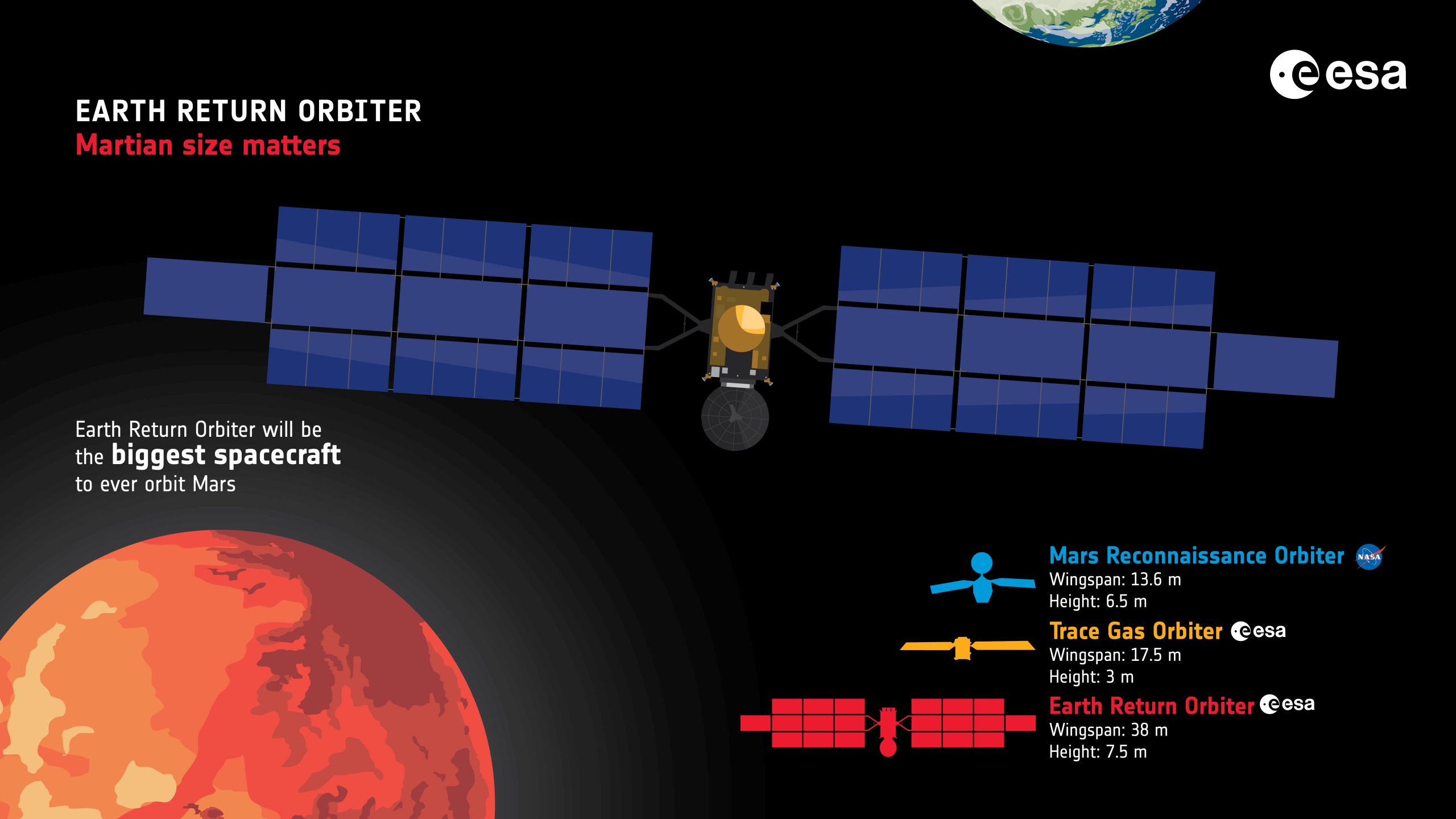European engineer Coralie Alary explains why the biggest spacecraft set to orbit the Red Planet needs to travel light, and how teams on Earth will work with the chosen luggage.
By Coralie Alary, Earth Return Orbiter module systems engineer
Going to a planet like Mars implies some significant constraints for the design of a spacecraft. You must think months of travel in deep space to cover up millions of kilometres, depending on the trajectory you choose and when you leave. When the launch of the Earth Return Orbiter takes place, Mars will be roughly 300 millions km away from Earth, or two times the distance between our planet and the Sun (2AU).
Earth Return Orbiter releases capsule with martian samples, as foreseen by the Mars Sample Return campaign in 2024. . Credits: NASA/ESA/JPL-Caltech/GSFC/MSFC
You have to carry a large amount of propellant, meaning large tanks as well and powerful engines. It requires significant energy to ‘feed’ all the systems and electronic boxes. It is also quite cold out there and you want to keep your baby warm with some electrical heaters. Temperatures in deep space drop down to -270°C, and the sun does not warm the spacecraft enough.
For all of this you need quite large solar panels – Mars receives less sunlight than Earth – and a very large structure to carry all that.
You need a certain level of autonomy, because the further you go away from Earth, the more communication delays you face to control the spacecraft and solve potential issues. You need a good computer, smart software and robust equipment. And pretty good large ears! That is why we have a big antenna in addition to smaller ones.
All of this led us to design big beasts that are up to the task like the Trace Gas Orbiter, launched in 2016 as part of ESA’s ExoMars programme. The spacecraft is currently orbiting Mars, and is providing science data and communication relay for rovers and landers on the martian surface.
Size matters
What if on top of going to the Red Planet we want to catch an object the size of a basketball (or a rugby ball!) in orbit containing Mars samples? You need to carry a system that can see this tiny ball in space, grab it and then bring the treasure back to Earth, all that with a power greedy electrical propulsion system.
This is a quick glance at what the Earth Return Orbiter (ERO) will have to deal with on its round- trip to Mars as part of the Mars Sample Return campaign.
Last but not least, the Earth Return Orbiter is pretty large and heavy for space standards. ERO must fit into a rocket that will carry it to Earth’s transfer orbit and push it in the right direction towards Mars. Europe’s brand-new heavy launcher Ariane 6 will take care of this initial push. The capability of the launcher for this kind of mission constrains the mass and size of the spacecraft from the very start.
Return ticket
Let’s put down some numbers to better understand what we talk about when going to Mars vs. going and coming back.
To put things in perspective with satellites close to Earth we can look at Sentinel 2, which is doing a great job at observing our planet from orbit. Sentinel 2 weighs 1.1 tonnes, is 2.3 metres tall and has a windgspan of 3.4 metres.
Getting closer to Mars, here are some figures to compare:
| PARAMETRES | Trace Gas Orbiter | Earth Retrun Orbiter |
| Weight (kg) | 4330 | 7200 |
| Propellant (kg) | 2440 | 3400 |
| Electrical propulsion (kg) | – | 495 |
| Chemical propulsion (Kg) | 195 | 350 |
| Electrical harness (kg) | 103 | 210 |
| Solar array (kg) | 133 | 343 |
| Height (m) | 4,83 | 7,5 |
| Wingspan (m)* | 17,5 | 38 |
| Solar array (m2) | 25 | 145 |
| Max power demand (W) | 1330 | 4500 |
* Note that an Olympic swimming pool is 50 metres in length.
Yes, that’s about the size of it when you want to go to Mars and back.
Europe is getting ready for packing it all for ERO – the first interplanetary spacecraft to make a full round-trip from Earth to Mars.





Discussion: one comment
Znamo da je veliki problem sve sto je veliko i potrebno dici gore u svemir sto je i naj tezi dio ali smatram da sve to iako košta jako puno nije tesko odputovati do marsa i natrag…Mi možemo dici sav taj materijal i možemo to sve pospajati gore u svemiru gdje je vakum sto je jako izazovno ..Mozemo pisati da je lako al zapravo je jako zahtjevno sto nama ljudima stvara veću želju za uspjehom i sto nas tera da prezivimo. Meni osobno je čast zivjeti u vremenu koje dolazi…jer ipak svemir je buducnost nase civilizacije…Pozdrav sa planete Zemlji..